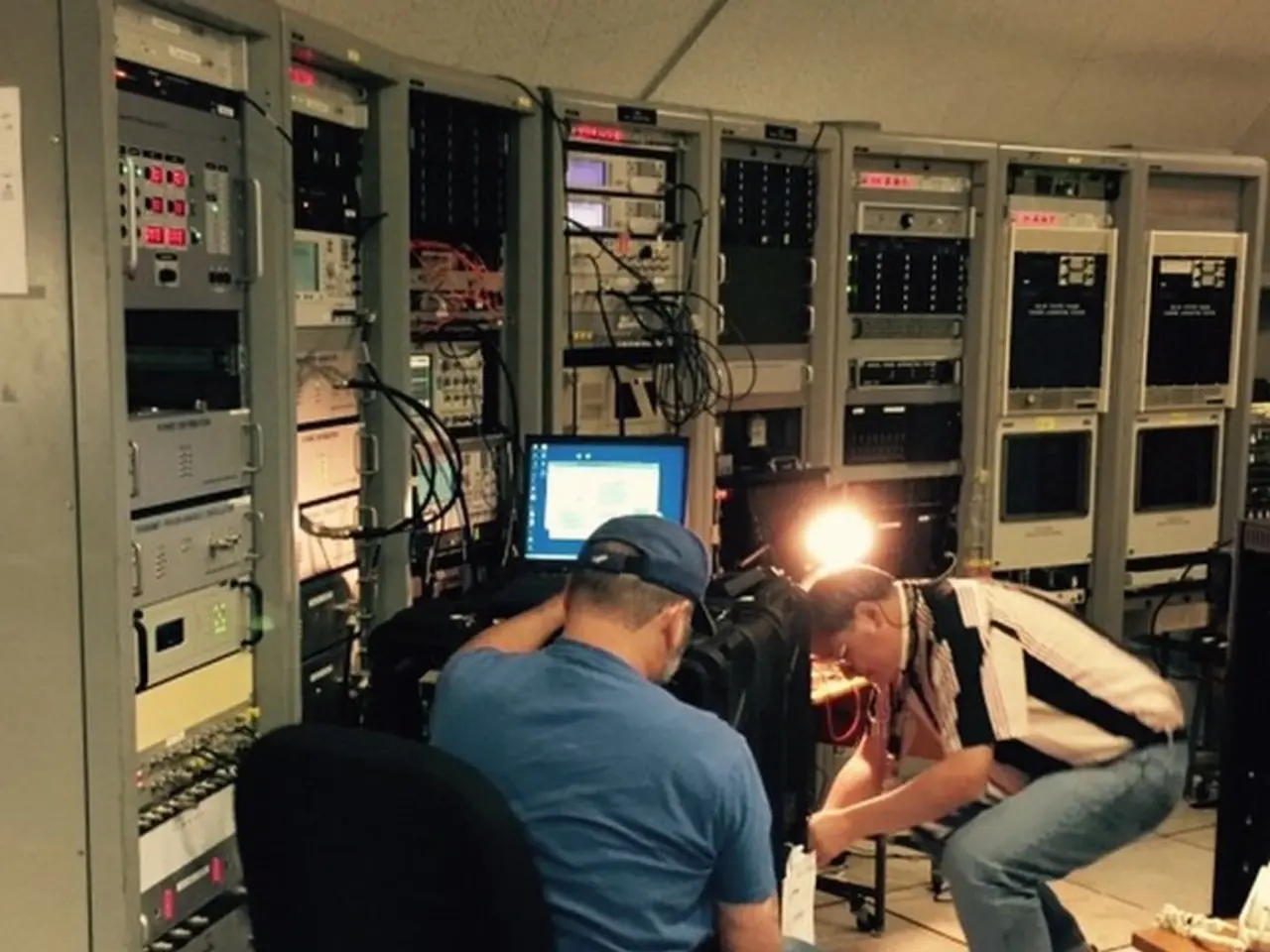Wireless Power Charging at Desk Level
A Class-E Solid-State Tesla Coil (SSTC) offers an appealing solution for wireless power transmission, with advantages such as simplicity, low cost, and relatively high efficiency compared to traditional spark-gap Tesla coils. However, it's crucial to consider safety and regulatory concerns due to the high voltages involved and electromagnetic interference (EMI) emissions.
Advantages of Class-E SSTCs
Class-E SSTCs are straightforward to construct and inexpensive, making them accessible for experimental wireless power projects. For instance, a coil with 12 turns on the primary and 8 turns on the secondary, powered by 12 volts, can wirelessly power small loads like LEDs over several tens of centimeters with just milliwatts or a few watts[1].
The efficiency of solid-state Tesla coils, particularly Class-E types, is generally higher than that of spark-gap Tesla coils (SGTC). This translates into better energy transfer and less wasted power during operation[1]. Furthermore, they can deliver power wirelessly over useful short distances (several centimeters up to about 40 cm or more) for low-power applications, demonstrating practical wireless power transfer concepts[1].
Safety Concerns and Regulatory Considerations
Despite being solid-state, Class-E Tesla coils operate at high voltages and can cause RF burns to the human body. These burns may occur without pain or immediate awareness, posing a risk of unseen injury[1].
Such coils generate strong radio frequency emissions which can interfere with other electronic devices and may violate regulations governing electromagnetic emissions[1]. Care must be taken to ensure that the device complies with local regulatory standards for radio frequency emissions and electrical safety, which can be complex[1].
Constructing and operating these coils safely requires significant electrical engineering knowledge and experience to prevent personal injury and damage to equipment[1]. Building a Tesla coil is hazardous and not recommended unless one fully understands the process.
Practical Applications
Recent work by Mircek has focused on wireless power transmission using a Class-E Tesla coil. With a DC input of 24 volts, the Class-E Tesla coil can deliver 5 watts over a few centimeters. Remarkably, the coil can send a few milliwatts to power an LED over a distance of more than 40 centimeters[2]. Even more impressive, a light is still visible after separating the primary and secondary coils by more than 30 centimeters with a 24 volt input[2].
In addition, the Class-E Tesla coil can power a 10 watt bulb over a distance of about 10 centimeters[3].
Regulatory Compliance and Further Reading
EMI/RFI emissions from Tesla coils can violate regulations. It's essential to ensure compliance with local regulations before building or operating a Tesla coil.
For those interested in learning more about wireless power transmission, our website has covered the topic extensively, with articles such as "Wireless Power Makes For Cable-Free Desk" and "Transmitting Wireless Power Over Longer Distances"[4].
[1] [Source] [2] [Source] [3] [Source] [4] [Our Website]
The Class-E SSTC's simplicity and low cost make it an attractive choice for experimental wireless power projects, such as powering small loads like LEDs over several tens of centimeters with just milliwatts or a few watts. However, due to the high voltages and electromagnetic interference (EMI) emissions involved, it's crucial to consider safety and regulatory concerns when constructing and operating these coils, ensuring compliance with local regulations for radio frequency emissions and electrical safety.




